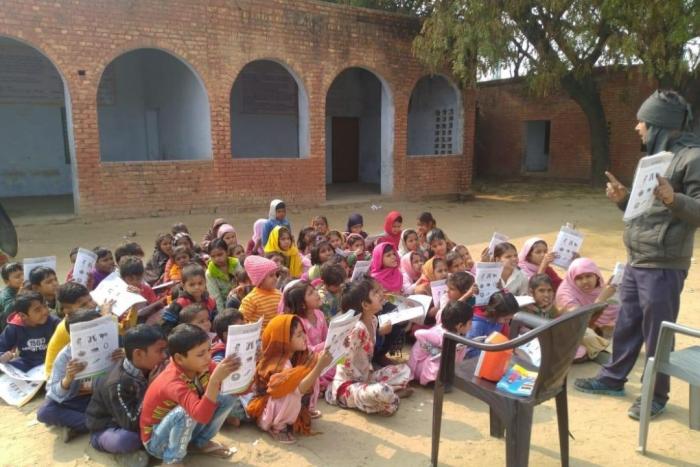New school of thought for rural education

Resource-starved rural schools need innovative solutions to accommodate the likely surge in students due to reverse migration
India’s not-so-robust public education system is soon going to face three daunting challenges which, if not tackled with imagination, could cause it to crumble.
First, we will see a 10-15 per cent increase in enrolment in resource-starved government schools, as parents move their children from private to public institutions because of economic constraints. Second, rural schools with poor infrastructure will see an over 25 per cent increase in enrolment, and urban schools that are better off will see a drop in enrolment because of reverse migration. Last, the number of children who drop out of school by Class V will see a significant increase from the 30 per cent recorded today because economic distress.
If this does not shock you, nothing will. We are going to face an education crisis of gigantic proportions in rural India, the likes of which we have not seen before. Conversations with senior ministers and officials in the States concerned clearly indicate that they already have many challenges today — they don’t need new ones. So who will tackle them, and when? The problem requires immediate attention.
Reverse migration impacts
In the past two months, for the first time in Independent India’s history, we have witnessed a reverse migration to villages from cities, with the country’s highways full of impoverished men, women and children trudging thousands of kilometres back to their villages, driven by their survival instinct and the sense of security the home provides. Several studies state that around 30 per cent of the big cities’ population comprises daily-wagers; they are mostly the ones returning to villages, having lost work and facing starvation.
Schools in rural India already lack basic infrastructure. Consider these facts: Though the student-teacher ratio has improved over the years — with the national average increasing from 32 in 2009-10 to 24 in 2015-16 — there are still schools where one teacher is managing as many as 150 students.
There are around one lakh single-teacher schools in India, accounting for about 9 per cent of the total schools in the country. The result: More than 50 per cent children in government-run schools are unable to perform grade-level tasks. It is also one of the major causes of high dropout rates in rural schools, where almost half of the total children leave the school by 14 years of age. Now, imagine the impact the massive influx of millions of migrant children will have on the fragile education system in rural India.
Researchers estimate that 40-60 lakh people might return to Uttar Pradesh, and 20 lakh to Bihar alone, in what is perhaps the greatest humanitarian crisis of the century.
Will these poor migrants, who have faced untold miseries, be willing to send their children to school, or will they force them to earn a living for the family? Now, even if these parents choose education for their children, how can the schools accommodate them? And, how are teachers going to manage these many students? Already, the number of school-going children between the ages of 5 and 14 is among the highest in these States.
Digital-driven solutions
We have two choices: First, sit back and watch. Second, act. If we choose the latter, it is the time to think for out-of-the-box solutions. If schools fail to accommodate the children, can we break the walls, as it were? If we don’t have more teachers, can we set up a system where one teacher can effectively teach more children?
We need to redefine our education system in rural India. We need to work on creating a different kind of infrastructure, and we need to invest in building teaching capacity, but not by sticking to conventional training methods. We have to leverage innovation in technology in order to deal with the numerous factors that can fail us in ensuring education for our coming generation in the post-Covid world.
But this is easier said than done. It requires fast-tracking the growth of the digital communications infrastructure in rural India, bridging the digital divide and, most importantly, creating a free learning platform where we track the progress of each child rather than just making content available through TV or YouTube. Learning is not a process that starts or ends with content.
Besides this, we need to equip teachers with multimedia tools to allow them to simultaneously teach hundreds of children remotely across several locations, which will help address the shortage of teachers in these schools. Digitalisation of education through well-thought out interventions is the only way forward, and if we do it systematically, it can address various problems ailing the education system of the country.
And this requires preparing one of the largest workforces — the teachers — to attempt something they have never done before: Using new, innovative teaching methodologies and tools. We cannot wait for the pandemic to peter out before we begin doing that, because time does not wait for anyone.

